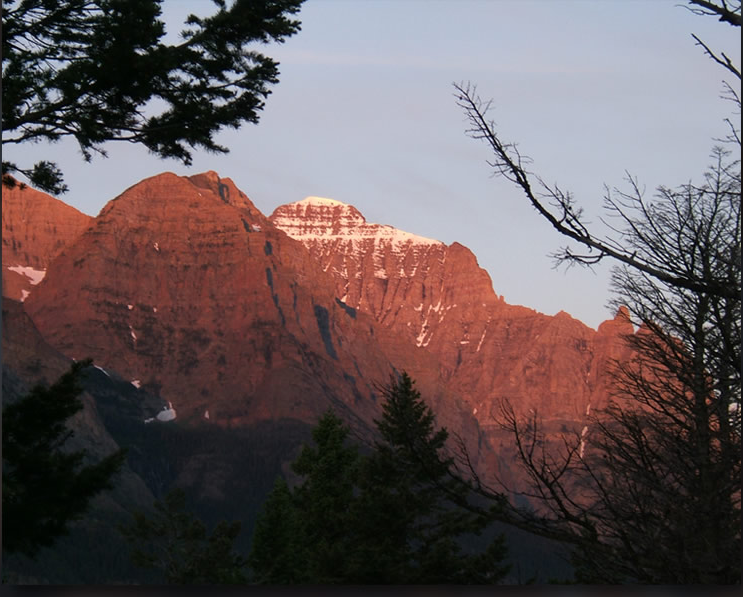Glowing Peaks
Glowing Peaks: A Mesmerizing Phenomenon
Have you ever witnessed the breathtaking sight of glowing peaks in the mountains? As the sun begins to set and darkness descends, these majestic peaks come alive with a mesmerizing display of colors. The phenomenon, known as "Glowing Peaks," is a captivating atmospheric optics event that occurs in mountainous regions around the world.
The Twilight Arch
As the sun dips below the horizon, the highest peaks continue to bask in a radiant red-orange glow. This phenomenon is caused by the lingering sunlight at higher altitudes, which illuminates the mountain summits. The light then blends with the hues of the glowing western sky, creating what is known as the "Twilight Arch." This arch of light paints the peaks with a warm and shadowless illumination, casting a spellbinding spectacle against the darkening sky.
The Changing Colors
As twilight progresses, the peaks undergo a captivating transformation. Initially adorned with a reddish-orange hue, they gradually shift towards a mesmerizing purple shade. This transition is a result of the changing atmospheric conditions and the interaction between light and various particles in the air. The purple glow of the peaks stands out prominently against the backdrop of the darkening sky, creating an otherworldly and ethereal scene.
Atmospheric Optics at Play
The Glowing Peaks phenomenon is a captivating example of atmospheric optics in action. It showcases how light interacts with the atmosphere, creating stunning visual effects that delight our senses. Here are some key factors that contribute to this enchanting display:
- Sunlight at Higher Altitudes: The lingering sunlight at higher altitudes plays a crucial role in illuminating the peaks even after sunset.
- Scattering of Light: The scattering of light by molecules and particles in the atmosphere contributes to the vibrant colors observed during twilight.
- Twilight Sky: The glowing western sky provides an additional source of light, enhancing the brilliance of the peaks.
- Atmospheric Conditions: The temperature, humidity, and composition of the air all influence the intensity and color of the glow.
Geographic Variations
While Glowing Peaks can be observed in mountainous regions worldwide, the specific characteristics and colors may vary depending on the geographic location and prevailing atmospheric conditions. Here are a few noteworthy variations:
- Alpine Glows: In the Alps, the peaks often exhibit a pinkish hue during twilight, creating a dreamlike landscape that has captivated artists and nature enthusiasts for centuries.
- Rocky Mountain Glows: The Rocky Mountains in North America are known for their vibrant red-orange glow during twilight, creating a striking contrast against the deepening darkness.
- Himalayan Glows: In the Himalayas, the peaks often appear golden or amber, lending an aura of mystique to the already awe-inspiring mountain range.
Capturing the Magic
Photographers and nature enthusiasts alike are drawn to the captivating beauty of Glowing Peaks. The interplay of colors and the ethereal atmosphere provide endless opportunities for artistic expression. If you're planning to capture this enchanting phenomenon, here are a few tips to keep in mind:
- Timing: Plan your shoot around sunset and twilight hours to witness the peak glow.
- Composition: Look for interesting foreground elements to complement the majestic peaks.
- Exposure: Experiment with exposure settings to capture the vibrant colors accurately.
- Post-processing: Enhance the colors and contrast in post-processing to bring out the full magic of Glowing Peaks.
A Natural Wonder to Behold
Glowing Peaks stand as a testament to the wonders of our natural world. These mesmerizing displays of color and light serve as a reminder of the intricate interactions between sunlight, atmosphere, and our planet's topography. Whether you have the opportunity to witness this phenomenon firsthand or experience it through the lens of a camera, Glowing Peaks will undoubtedly leave an indelible impression on your soul. So, the next time you find yourself in the mountains during twilight, keep your eyes peeled for the awe-inspiring beauty of Glowing Peaks.

Glowing Peaks imaged in Glacier National Park by Peg Zenko (Tangent Photos). Image ©Peg Zenko, shown with permission.
Immediately after sunset high mountains continue to glow with a red-orange and increasingly shadowless light.
They are first lit by the sun still shining at higher altitudes and then by the light of the glowing western sky itself, the '"Twilight Arch". Eventually the peaks take on a purple hue and are bright against the darkening sky.
Note: this article has been automatically converted from the old site and may not appear as intended. You can find the original article here.
Reference Atmospheric Optics
If you use any of the definitions, information, or data presented on Atmospheric Optics, please copy the link or reference below to properly credit us as the reference source. Thank you!
-
<a href="https://atoptics.co.uk/blog/glowing-peaks/">Glowing Peaks</a>
-
"Glowing Peaks". Atmospheric Optics. Accessed on April 19, 2024. https://atoptics.co.uk/blog/glowing-peaks/.
-
"Glowing Peaks". Atmospheric Optics, https://atoptics.co.uk/blog/glowing-peaks/. Accessed 19 April, 2024
-
Glowing Peaks. Atmospheric Optics. Retrieved from https://atoptics.co.uk/blog/glowing-peaks/.